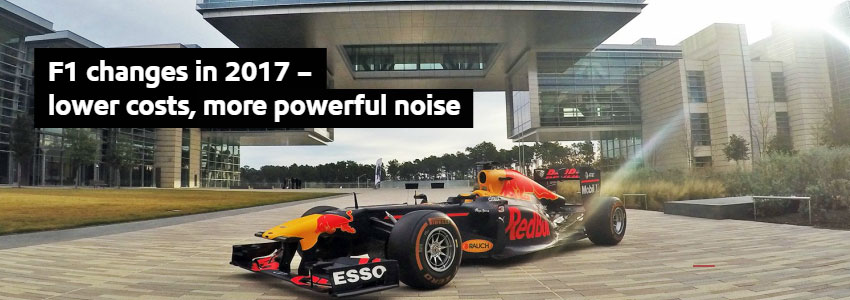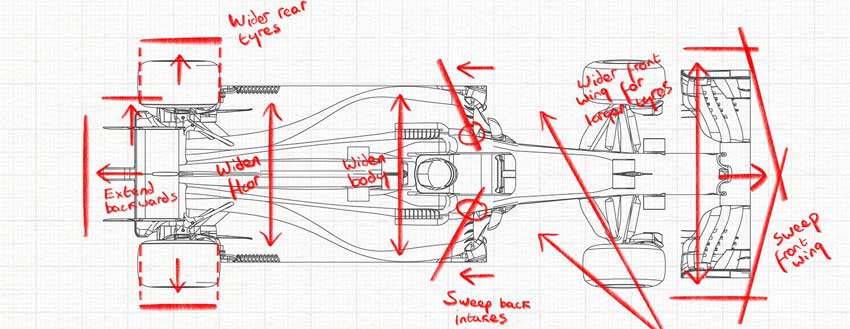F1 changes in 2017 - lower costs, more powerful noise
 F1 changes in 2017 - lower costs, more powerful noise
F1 changes in 2017 - lower costs, more powerful noise
The new Formula 1 season is the most awaited time of the year for many motorsport enthusiasts. In 2017, you certainly expect new changes regarding the racing cars’ design, engines, tires and many more. But what would you say if you could take a look inside an F1 factory?
Red Bull did this to give you an insight as close to reality as possible this year. Thus, you have access to the most important details on the new RB13, the Red Bull car of 2017 for Formula 1.
As the chief technician Pat Symonds says, the car looks like a real racing car, with large rear tires and a modern look.
A look inside the Red Bull Racing factory
The creation and production process for an F1 car is complex and very interesting. However, the video presentation of the factory makes the entire process seem simple and very interesting, presenting the modern methods used, from the creation of the simplest original design elements to the final production stage.
The Red Bull goal for 2017 was to create a more aggressive car model, which includes elements of the new generation.
Changes in Formula 1 in 2017
In 2017, not only the rules and the qualifications format will change, but some technical details as well for the participating cars.
Like every year, the cars participating in Formula 1 races will suffer changes to provide the drivers with a more extreme, more efficient and safer driving experience.
Here are some of the changes proposed for 2017 for the bodies of Formula 1 cars:
- 305 mm front tires and 405 mm rear tires compared to 245 mm and 305 mm in 2016
- Suspensions with incidence profile of +/- 5 or +/- 10 degrees
- 1800 mm front wing and a simplified end plate
- Floor with a maximum width of 1600 mm and a minimum width of 1400 mm
- Body with a maximum width of 1600 mm, unlike a maximum of 1400 mm in 2016
- Reduced exclusion zones to allow the construction of larger curbs
- Maximum weight of 722 kg, plus tires of approximately 5 kg, as opposed to the maximum permissible weight in 2016 of 702 kg

Regarding the speed of the Formula 1 cars, the FIA (Federation Internationale de l’Automobile) claims that it could increase by over 3 seconds due to the evolution of aerodynamics rules and due to the wider tires, aspect which will make the cars of 2017 be more difficult to drive than in previous years due to the drivers’ exposure to higher G forces.
Due to these technical changes, the experts in the field believe that overtaking will be made in safer conditions, and the drivers will be able to adopt new overtaking techniques. They also expect an increase in overtaking by 5%.
The engines of these extreme cars are the center of attention every year. But in 2017 it is expected a decrease in costs by up to 1 million Euro compared to last year. Despite the fans’ expectations of less noisy engines, there are rumors that this year’s engines will produce an even more powerful noise.
Formula 1 races are famous not only for the extremely powerful cars and for the adrenaline that they bring, but also for their pilots’ enthusiasm. In 2017, there are even more surprises regarding the long-awaited event. Read more details about the Formula 1 races program this year.







